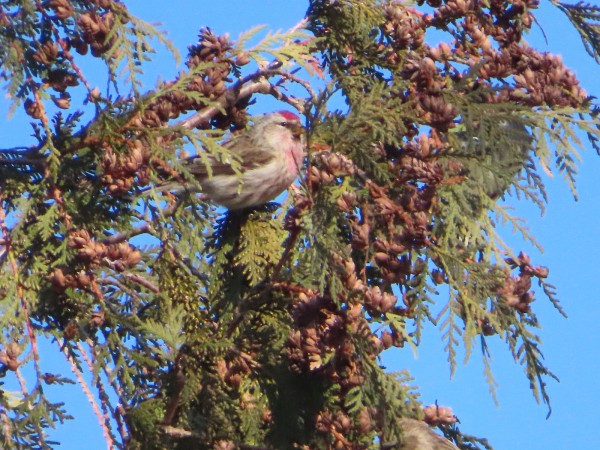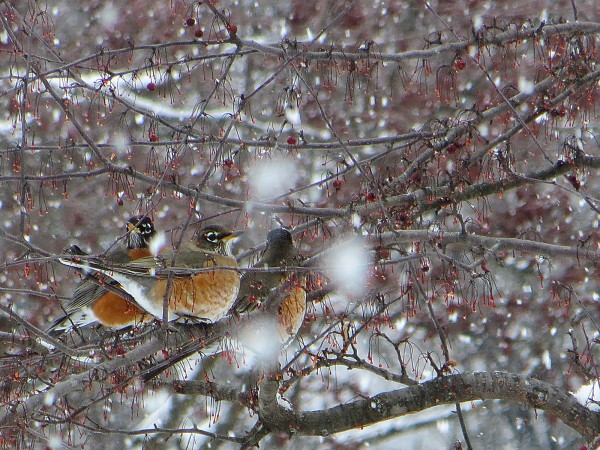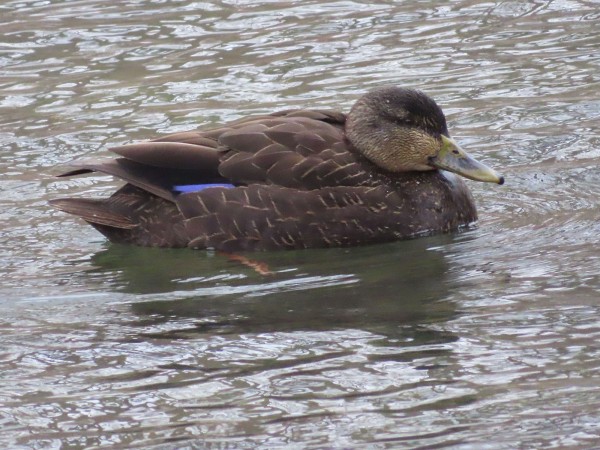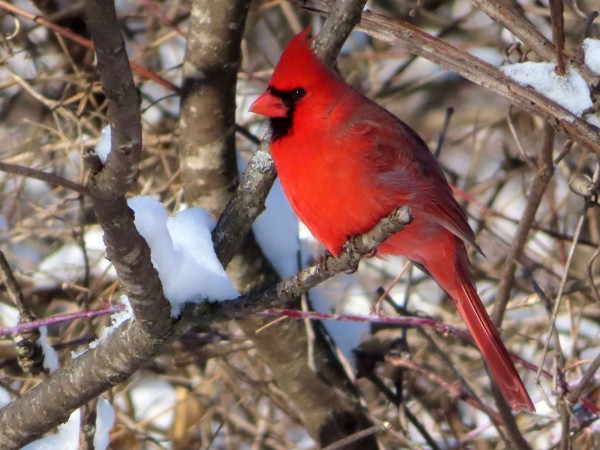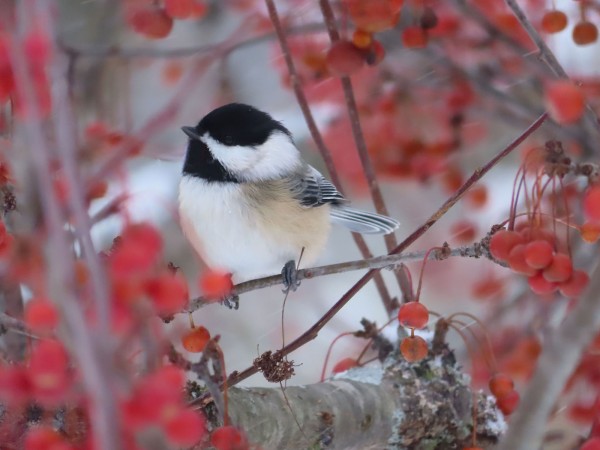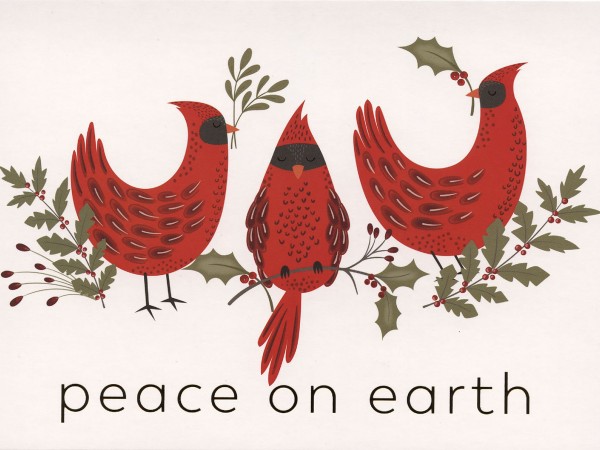Chuck's Birding Report #97
18 January - 24 January 2022
Dear fellow flock of birders,
So what are the birds doing in the Arboretum or around the periphery of the Arboretum?
I usually start my walks in the crabapple collection or in the horticultural birches next to the crabapple collection. I’ve seen a few American Goldfinches eating seeds from the female catkins of the birches or eating bits of the crabapples in the crabapple collection. With some of the recent snows the crabapple trees are covered with snow. Included is a photo of an American Goldfinch surrounded by crabapples and snow.
Again we are seeing Common Redpolls in a variety of places, most commonly in the birches and alders pulling seeds out of the female catkins. This past week I saw Common Redpolls extracting seed from the brown structures in the row of Arborvitae just north of the pump house. I had never observed them feeding in the Arborvitae before. There are probably other food sources for the Common Redpolls that I’m not aware of. Included is a photo of a male Common Redpoll surrounded by brown structures containing seeds.
I am really surprised by the lack of American Robins in the Arboretum this winter. In the past there are usually 20 to 30 robins that stay all winter in the Arb feeding on the crabapples and finding food by turning over leaves around the springs. I’m not sure what’s different this year but I’m only seeing occasional single robins in the Arboretum. Maybe one of the robins suggested that they go south this year and they all agreed. I think I would have agreed too. I’ve included a photo from a past year that shows several American Robins in a Crabapple Tree with snow falling around them.
I always like to check the Big Spring and the outflow that flows all winter toward the north without freezing. The temperature remains a constant 50-55 degrees. This past week I’ve seen the Great Blue Heron way out where the outflow turns to the right (east) standing in the water either on the left side or the right side often behind some overhanging branches. I’ve included a photo of the Great Blue Heron standing on the left side behind branches. Last Tuesday we not only saw the heron in the water but our group also saw two Great Blue Herons fly over us for a total of three Great Blue Herons. I’ve never seen that many Great Blue Herons in the Arb in the winter. That was a first. Included is a photo of a heron at the Big Spring outflow. Other birds seen at the Big Spring are Mallards, Gadwalls and Canada Geese. Sometime a rattling Belted Kingfisher flies in to say hello.
Next let’s head to the Spring Trail Pond (aka the Duck Pond). I’ve advertised this Arb birding spot quite often because of all the different species of birds that can be found there during the winter. There are at least 100 Mallards in the pond and a few days ago I counted 160. When it gets really cold, like we’ve had a couple days this past week, the water in the pond put out a lot of steam. The Mallards appear to be having a steam bath. Included is a photo of some of the Mallards enveloped by steam.
Mixed in with the Mallards is often a single American Black Duck. It has very dark brown plumage and a speculum (colored patch on the wing) that is iridescent purple without white borders. A photo of the American Black Duck is included.
Another favorite bird at the Spring Trail Pond is the Northern Cardinal. They, both males and females, are especially numerous there. And after a fresh snowfall, which we’ve had for several days, the mostly red male really stands out against the white of the snow. Included is a photo of the male perched in a shrub with some snow behind it.
My last two photos relate to birds and Christmas or Holiday cards. In past years I often include a photo of a bird I’ve seen in the winter (surprise surprise) in my cards. But I’ll bet others get cards that have birds on them too, either as photos or artistic renditions of birds. To me it reflects how important birds and nature are to us. It also reminds us of how important it is to support bird habitats and fight climate change so that we don’t further reduce bird populations. I’m sure I’m preaching to the choir but reminders are good once in a while.
Included is a photo of a Black-capped Chickadee in a Crabapple Tree that we sent as a card a couple years ago. Also included is the cover of a card that we received this year showing an artist’s concept of three Northern Cardinals that I really impressed me and I hope you too. The verse is also timely.
There are three species of birds not found presently in the Arb that I would like to mention. The first is the Snowy Owl. Two are being seen around the area of the Monona Terrace and Machinery Row as well as on the ice of Lake Monona. You might drive there to see if you can find one or both. The second is a Peregrine Falcon which is often perched in or near the nest box on the south side of the MG&E plant. And the last species is the Tundra Swan. Since the lakes are frozen over the Tundra Swans have move to Lower Mud Lake and can be seen from Lewis Park in McFarland. They sleep on the ice at both the northern and southern end and feed in the open water where the Yahara River enters at the north end and leaves at the south end. I counted 327 some days ago. All three species are worth checking out.
That’s the bird report for this past week in the Arb.
I wish you all good health and good birding in 2022,
Chuck


